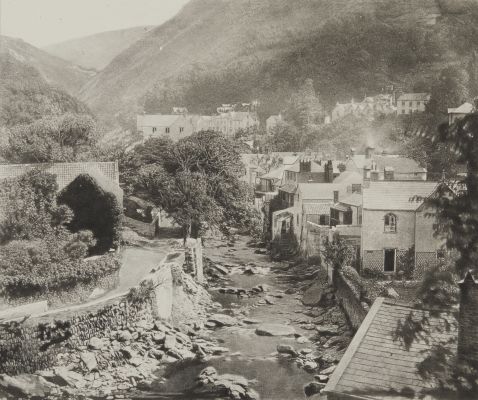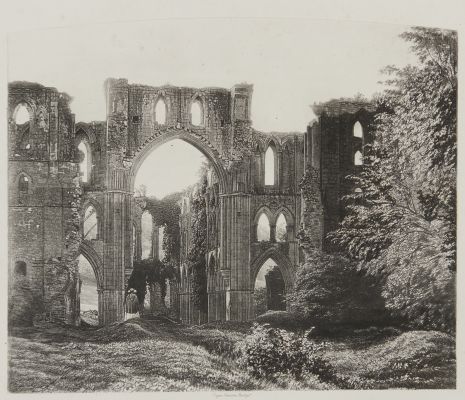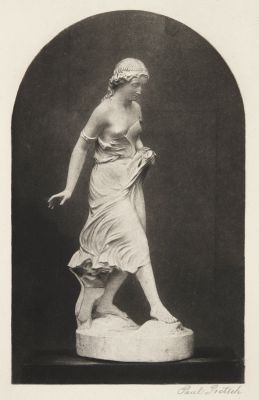
Title
West Front of Wells CathedralArtist
Bedford, Francis (British, 1816-1894)Publication
The Gentleman's MagazineDate
1862Process
Pretsch glue-chromate typographic processAtelier
Paul PretschImage Size
15.2 x 11 cm
The Gentleman’s Magazine, July 1862, presents “Engraving by Photography,’ an article relating to the development of photogalvongraphy. The article reads… we can present our readers with some specimens of a process which appears to be an extraordinary achievement, and of which the consequences may be of great importance. The illustration has been taken from nature by Mr. Francis Bedford, and the engraved block, absolutely untouched by the graver, produced by Paul Pretsch, produced by engraved printing blocks (surface copper, backed with type metal, mounted on wood, like the cast of a wood engraving) to be printed by the ordinary printing press with or without type … Photographs in our time are still perishable, but in printer’s-ink and paper stand the test of centuries. [1] Also see Eder p. 583 re. these half-tone electrotypes.
Reproduced / Exhibited
Hanson, David A. Checklist of Photomechanical Processes and Printing, 1825-1910. , 2017. p. 115.
Albertina Inventarnummer FotoGLV2000/9239
References
[1] Eder, Josef M, and Edward Epstean. History of Photography, by Josef Maria Eder. Translated by Edward Epstean. New York: Columbia University Press, 1945. p. 583 re. these half-tone electrotypes.











